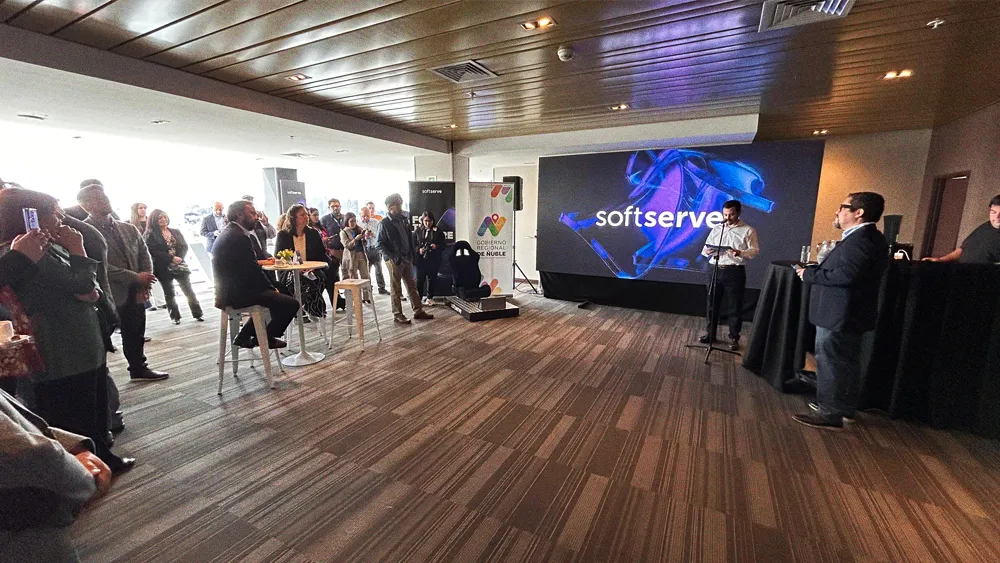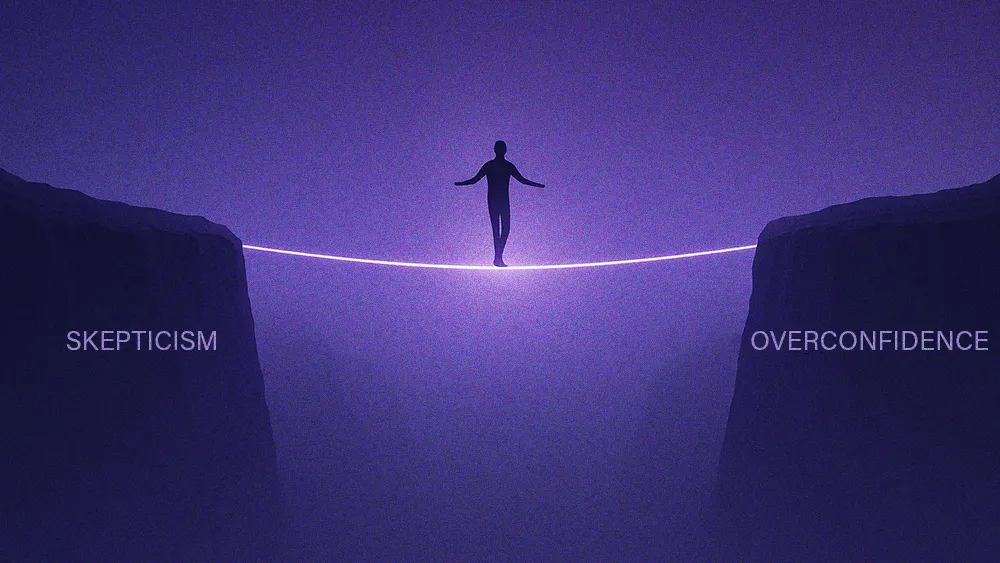AI in HR risks creating ‘automated garbage’ when core internal issues go unaddressed

Key Points
Applying AI to flawed internal systems won’t fix them; it will only create “automated garbage” at an unprecedented speed.
Dr. Jeffrey Allan, Director of the Institute for Responsible Technology and Artificial Intelligence at Nazareth University, argues that companies must diagnose their core problems before deploying AI as a solution.
In HR, this leads to misusing AI to accelerate broken processes like recruitment and predict employee turnover without addressing its root causes, such as poor management.
To avoid becoming scapegoats for AI-driven changes, HR leaders must build a business case for fundamentally redesigning outdated systems rather than simply automating them.
If you automate a process that's garbage, all you get is automated garbage. You have to fix the process first, then worry about automating it.

Dr. Jeffrey Allan
Director, Institute for Responsible Technology and Artificial Intelligence
Nazareth University
In the frantic, FOMO-driven rush to adopt artificial intelligence, HR departments are being sold a powerful promise: that AI will finally solve their most persistent and high-impact business challenges. But according to one expert in responsible AI, this rush to automate is putting the cart before the horse. For companies with flawed internal systems, AI won’t be a miracle cure; it will just be a way to produce “automated garbage” at an unprecedented speed.
We spoke with Dr. Jeffrey Allan, the Director of the Institute for Responsible Technology and Artificial Intelligence at Nazareth University. Drawing on a career that spans strategic roles at SAP and IBM, founding two Silicon Valley startups, and now developing AI strategy curricula for business leaders, he argued that companies have forgotten the fundamentals of strategic planning. His work is focused on a single, critical principle: diagnose the problem before you deploy the technology.
“If you automate a process that’s garbage, all you get is automated garbage. You have to fix the process first, then worry about automating it,” Allan warned. “From a real strategic management point of view, let’s figure out what our real problems are. AI, then, may be a good solution, or it may not be the right solution. We’ll decide that later once we actually know what we’re dealing with.”
This “automated garbage” problem is particularly acute in HR, a department facing a dangerous paradox. It is tasked with solving mission-critical issues like talent retention and recruitment, yet it is often the last in line for technology funding, creating a high-risk environment for poor AI implementation.
The cost center dilemma: “HR was always seen as a cost center,” Allan explained. “When you try to convince people to spend on AI, you run into the same problem: they’d rather invest in AI-powered CRM systems for sales and marketing than in tools that help you recruit faster or prevent people from leaving. Those things just don’t get prioritized over generating sales.”
This dynamic forces HR leaders into a reactive posture, where AI is often misapplied as a high-tech band-aid on a deep, strategic wound. Allan points to employee retention and recruitment as prime examples. Companies are eager to use AI to predict when an employee might quit, but they fail to address the root cause.
Predicting a problem you won’t fix: “Most people quit because they have a lot of friction with whoever’s managing them,” Allan stated. “Is it because of the way we hire and select candidates, the way we promote people, or the training that managers get before they go into those positions? If the problem is their manager, you probably could have headed off this whole thing by getting in front of that first.”
The recruitment fallacy: “I’m of the personal opinion that we hire in the wrong way,” he said. “We hire the people who can write the best resumes, keyword-stuff them, and charm their way through interviews, rather than the people who are actually the most skilled at the job.”
To break the cycle, Allan teaches HR leaders to shift their mindset from being a cost center to a value driver. The solution isn’t to demand a bigger budget, but to build an undeniable business case by speaking the language of the C-suite: data and ROI.
Prototypical approach: “I teach them to prototype what they’re doing so that they can sit down in front of stakeholders, executives, and say, ‘This is what I want to do, this is how we should do it, and this is how much money we’re actually going to bring to the organization.’ I’m trying to change that perception that HR is just there as a cost center and doesn’t have as much value as other departments, and to do so with AI.”
Even with perfect implementation, however, AI’s efficiency gains will lead to an uncomfortable future. As automation reduces the need for human staff, HR will be on the front lines of painful organizational change, forced into a role it did not create.
The scapegoat emerges: “That sentiment already existed before AI. In layoffs, the finger always points to HR. With AI, it’s only going to get worse,” Allan predicted. “Companies will be more than happy to let HR take the blame—’Well, that’s what HR said. What can we do?’ I see HR becoming the scapegoat.”
This brings the challenge full circle. To avoid becoming scapegoats for a technological revolution they can’t control, HR leaders must champion a deeper, more fundamental transformation. The path forward requires questioning the very foundations of how we hire, manage, and evaluate people—a system built for a bygone era. “Resumes and interviews are, let’s be fair, a broken process designed for something 80 years ago,” Allan concluded. “If we keep clinging to outdated systems, AI won’t save us. It will only expose just how broken they already are.”
Resumes and interviews are, let's be fair, a broken process designed for something 80 years ago. If we keep clinging to outdated systems, AI won’t save us. It will only expose just how broken they already are.

Dr. Jeffrey Allan
Director, Institute for Responsible Technology and Artificial Intelligence
Nazareth University
Resumes and interviews are, let's be fair, a broken process designed for something 80 years ago. If we keep clinging to outdated systems, AI won’t save us. It will only expose just how broken they already are.

Dr. Jeffrey Allan
Director, Institute for Responsible Technology and Artificial Intelligence
Nazareth University
Related articles
TL;DR
Applying AI to flawed internal systems won’t fix them; it will only create “automated garbage” at an unprecedented speed.
Dr. Jeffrey Allan, Director of the Institute for Responsible Technology and Artificial Intelligence at Nazareth University, argues that companies must diagnose their core problems before deploying AI as a solution.
In HR, this leads to misusing AI to accelerate broken processes like recruitment and predict employee turnover without addressing its root causes, such as poor management.
To avoid becoming scapegoats for AI-driven changes, HR leaders must build a business case for fundamentally redesigning outdated systems rather than simply automating them.

Dr. Jeffrey Allan
Nazareth University
Director, Institute for Responsible Technology and Artificial Intelligence

Director, Institute for Responsible Technology and Artificial Intelligence
In the frantic, FOMO-driven rush to adopt artificial intelligence, HR departments are being sold a powerful promise: that AI will finally solve their most persistent and high-impact business challenges. But according to one expert in responsible AI, this rush to automate is putting the cart before the horse. For companies with flawed internal systems, AI won’t be a miracle cure; it will just be a way to produce “automated garbage” at an unprecedented speed.
We spoke with Dr. Jeffrey Allan, the Director of the Institute for Responsible Technology and Artificial Intelligence at Nazareth University. Drawing on a career that spans strategic roles at SAP and IBM, founding two Silicon Valley startups, and now developing AI strategy curricula for business leaders, he argued that companies have forgotten the fundamentals of strategic planning. His work is focused on a single, critical principle: diagnose the problem before you deploy the technology.
“If you automate a process that’s garbage, all you get is automated garbage. You have to fix the process first, then worry about automating it,” Allan warned. “From a real strategic management point of view, let’s figure out what our real problems are. AI, then, may be a good solution, or it may not be the right solution. We’ll decide that later once we actually know what we’re dealing with.”
This “automated garbage” problem is particularly acute in HR, a department facing a dangerous paradox. It is tasked with solving mission-critical issues like talent retention and recruitment, yet it is often the last in line for technology funding, creating a high-risk environment for poor AI implementation.
The cost center dilemma: “HR was always seen as a cost center,” Allan explained. “When you try to convince people to spend on AI, you run into the same problem: they’d rather invest in AI-powered CRM systems for sales and marketing than in tools that help you recruit faster or prevent people from leaving. Those things just don’t get prioritized over generating sales.”
This dynamic forces HR leaders into a reactive posture, where AI is often misapplied as a high-tech band-aid on a deep, strategic wound. Allan points to employee retention and recruitment as prime examples. Companies are eager to use AI to predict when an employee might quit, but they fail to address the root cause.
Predicting a problem you won’t fix: “Most people quit because they have a lot of friction with whoever’s managing them,” Allan stated. “Is it because of the way we hire and select candidates, the way we promote people, or the training that managers get before they go into those positions? If the problem is their manager, you probably could have headed off this whole thing by getting in front of that first.”
The recruitment fallacy: “I’m of the personal opinion that we hire in the wrong way,” he said. “We hire the people who can write the best resumes, keyword-stuff them, and charm their way through interviews, rather than the people who are actually the most skilled at the job.”

Dr. Jeffrey Allan
Nazareth University
Director, Institute for Responsible Technology and Artificial Intelligence

Director, Institute for Responsible Technology and Artificial Intelligence
To break the cycle, Allan teaches HR leaders to shift their mindset from being a cost center to a value driver. The solution isn’t to demand a bigger budget, but to build an undeniable business case by speaking the language of the C-suite: data and ROI.
Prototypical approach: “I teach them to prototype what they’re doing so that they can sit down in front of stakeholders, executives, and say, ‘This is what I want to do, this is how we should do it, and this is how much money we’re actually going to bring to the organization.’ I’m trying to change that perception that HR is just there as a cost center and doesn’t have as much value as other departments, and to do so with AI.”
Even with perfect implementation, however, AI’s efficiency gains will lead to an uncomfortable future. As automation reduces the need for human staff, HR will be on the front lines of painful organizational change, forced into a role it did not create.
The scapegoat emerges: “That sentiment already existed before AI. In layoffs, the finger always points to HR. With AI, it’s only going to get worse,” Allan predicted. “Companies will be more than happy to let HR take the blame—’Well, that’s what HR said. What can we do?’ I see HR becoming the scapegoat.”
This brings the challenge full circle. To avoid becoming scapegoats for a technological revolution they can’t control, HR leaders must champion a deeper, more fundamental transformation. The path forward requires questioning the very foundations of how we hire, manage, and evaluate people—a system built for a bygone era. “Resumes and interviews are, let’s be fair, a broken process designed for something 80 years ago,” Allan concluded. “If we keep clinging to outdated systems, AI won’t save us. It will only expose just how broken they already are.”




